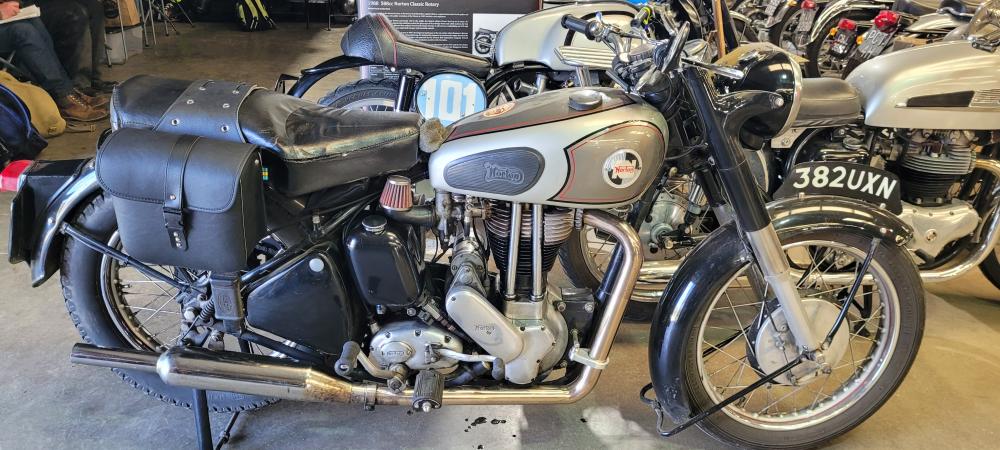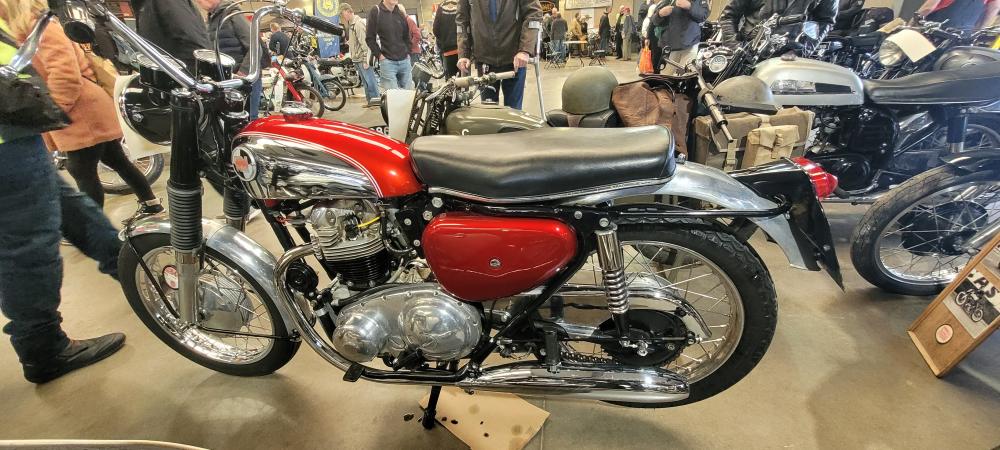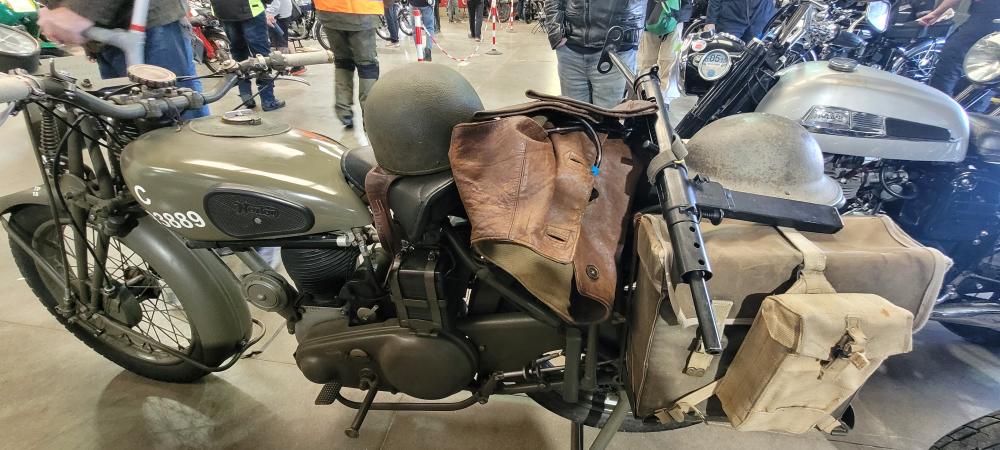A discussion on needles, jets and spray tubes for Amal Concentrics
|
Does anyone know if there is any difference between pre-Mk.lll 850 carbs and the Mk.lll items ..... |
Amal 932 carburettor specifications
Amal Concentric 932 (32mm) |
||
| Mk.ll 1973 - 1974 | Mk.ll 1973 - 1974 Mk.lll 1975 - 1977 |
Mk.lla 1974 |
| Specification No. 1 | Specification No. 2 | |
|
|
|
Bear in mind that these are always starting positions, and the carb may need individual tuning. Amal concentric carburettors don't have an idle jet, well not one you can tune as such, and the needle has no effect on idling whatsoever. Within a particular carburettor type, the needle is the same for just about every bike I have come across; they only varied for alchohol fuel and particularly difficult to carburate engines, like odd 2 strokes.
Angelo (rubberboy@dial.pipex.com) on NOC-L 19th. Feb 1998
Needle types
There were to my knowledge, at least two different types of needles used on the Mk.l Concentrics; the four i.d. ring one used for carburettors fitted with sectioned spray tubes, and the two i.d. ring ones used for non sectioned spray tubes.
Peter Aslan (paslan@uk.mdis.com) on NOC-L 20th. Feb 1998
What is a sectioned spray tube? What are i.d. rings?
Spray tubes
Sectioned Spray Tubes
Spray tubes are the tube made of brass poking up from the bottom of the carburettor, where the needle goes in. The sectioned ones are the ones with half cut away; the side towards the engine. Essentially, the side of the tube is cut away level with the bottom of the carburettor. This was done to increase the amount of fuel in the mixture as the Norton were becoming concerned about the size of the main jets on the 850. [side note - the sectioned spray tubes were probably cheaper than the jets).
Needle i.d. Rings
These are different rings from the ones that alter the mixture. They are engraved above the mixture rings.
Sectioned spray tubes were, as far as I know, only fitted to the 850 Commando. I know of a number of mechanics who will remove these things, put the non-sectioned ones in and jet the bike accordingly. There is nothing wrong with this, although plug chops and a pocket of jets are required.
Peter Aslan (paslan@uk.mdis.com) on NOC-L 23rd. Feb 1998
|
For my 1973 850 , why the change from full spray tube with short needles to the cutaway spray with ¼" longer needles? Did this change require a change in the slide cutaways? or a jetting change? Why do 932s have different numbers stamped next to 932? What year was this change, why, and can you fit the later longer needles and cutaway spray tubes to the earlier Amals? |
Why all the changes to these carburettors?
The change to the sectioned spray tube was due to an increasing need for more fuel in the mixture of the 850. As far as I'm aware, the slide stayed the same at 3½; only the early 930 carburettors had No. 3 slides.
The different number is the carburettor specification or configuration number. These are even different between the left and right hand carburettors. The best source I've found for this, in terms of a lookup table, is in Bacon's book on Norton Restoration, although the information is incomplete.
The spray tube is like a top hat in section, and is held in by an interference fit with the body of the carburettor. The bottom of the top hat has been knurled. To take remove one, just knock it out from above. The new one is then pressed in from below. No big deal, but make sure you get the section of the sectioned spray tubes facing the right way, i.e. downstream
Peter Aslan (paslan@uk.mdis.com) on NOC-L 24th. Feb 1998
Spray tubes - some theories as to which type will be the best
Like others, I have consulted the Bacon book, which, although it contains some useful data on carburettors, also has lots of gaps in the data and does not wholly relate the changes in specifications to changes in engine sizes or tune states. And it doesn't really say what combinations of set-up should or could be used to produce some desired outcome or other.
On spray tubes there are at least three types:-
- regular cylindrical
- stepped (called sectioned here by some contributors)
- chamfered (or diagonally cut according to Mike Taglieri)
It has been suggested that the sectioned and/or chamfered spray tubes allow more fuel through, but I'm not sure I can agree wholly with this because the rate of fuel flow is principally a function of the size of the main jet and the pressure drop across it.
However, I do like the idea that the chamfered spray tube results in better atomisation of the fuel and a more evenly distributed air/fuel mixture, because the chamfer faces directly into the downstream low pressure side, giving the maximum pressure drop and hence the best suck on the fuel coming out. For the cylindrical spray tube, the pressure drop acting across the plane of the top of the tube will certainly drag the fuel out, but I can't convince myself that this will result in mixing which is as effective as with the chamfered tube. Furthermore, the flow path for fuel coming out of the chamfered spray tube is much more amenable (i.e. the fuel comes out more or less in the same parallel direction as the air flow), compared with the fuel trying to get out of the top of a regular cylindrical spray tube (where it has to turn through 90 degrees in a hurricane air flow).
I also suggest that the chamfer is better than the sectioned spray tube for another reason (even though both have their openings facing the downstream low pressure side) because for the moderately chamfered tube all of the area through which the fuel can flow out of the spray tube is in the turbulent, high speed air flow - with resulting excellent mixing. For the sectioned spray tube which is machined right down to the wall (floor) of the inlet duct on the low pressure side, the air flow at the wall is going to be slow by comparison, and only a proportion of the spray tube opening is in the turbulent, non-wall air flow - resulting in much poorer fuel/air mixing.
On needle jets the difference in construction between types 105 and 106 is enormous - they are so completely different that it is difficult to believe that they are designed to do similar jobs. 105 has a relatively small internal diameter at its upper end, compared with 106 which has a much greater internal diameter and 2 small holes drilled opposite each other on the hexagonal machined part - obviously some secondary atomisation device, because they are in line with the middle of the small air intake (next to the pilot jet air intake). The two that I have here are different by about 0.25", the shorter one having 3 i.d. rings and the longer one 2 i.d. rings although they both have 3 needle position rings. The longer one lives with the 106 needle jet.
It has been suggested that the longer needle should be used with the sectioned spray tube, but I don' t see any logical reason at all for this (unless it is possible for the shorter needle to 'pop out' of the sectioned spray tube where the material has been removed, which would be nasty!) I'm not really sure why the longer needle should live with the 106 jet, either.
I am aware that I haven't provided any answers at all. So, is there anywhere a definitive reference for the setting up and tuning of Amal carbs which addresses all the issues and all the configurations?? I use both my Mk.lls type 932 (singly, of course - its a single carburettor 99), one with a 105 needle jet and the other with 106 and I've tried different needle lengths in both, and also combinations of 230 and 240 main jets. I can get either carburettor to work well, so that I can't really tell huge differences between them on my re-worked but not too heavily tuned engine. However, on balance, my best 932 combination is 230 main, 106 needle jet, 2 ring long needle, chamfered spray tube, 3½ slide and for what its worth, a 25 pilot jet, with the tiny starting circuit hole and its by-pass hole kept scrupulously free from blockages.
Paul Preece (p.e.preece@swansea.ac.uk) on NOC-L 20th. Feb 1998
Experience with uncut spray tubes
I can tell you my experience with the full, un-cut spray tube. Years ago I bought two new 932 Amal carburettors for my 1974 850 Roadster to replace the originals. I noticed the full spray tube of the new ones versus the cut-away on the originals, but I installed them the way they were. Boy, what a huge flat spot on partial throttle openings! And full throttle power wasn't that great either, and this was using all of the original jetting and slides.
Not knowing how to remove the spray tubes, I bought one of those small sanding drums you put on the end of your electric drill and carefully cut away the downstream side of the tube (the side facing the engine). The carburettors then performed as well as the originals, and soon began sticking like them too, at which point I installed dual 34mm Mikunis and never looked back.
Bill Larson (william_larson@aar.com) on NOC-L 25th. Feb 1998
Purpose of the 2 small holes in the carburettor needle jets
I thought the 2 holes in the needle jets were to provide a type of accelerator pump effect, as was supposed to be a feature of the earlier Amal Monobloc carburettor. The action was, I think, that under small, steady throttle openings, fuel would tend to flow out of these holes and form a small pool of petrol that would be immediately available upon sudden large throttle openings. Perhaps the holes do both this job and pre-atomise the fuel as well.
Jordan Princic (jordan@zip.com.au) on NOC-L 1st. Mar 1998
|
© NOC-L authors as above 1997 - |
© Norton Owners Club 2002 |








